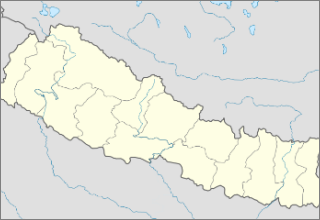Country Profile Background
Since 2007, following the end of its civil war, Nepal has been pursuing a new constitution, aiming to shift the country from a unitary state to a federal structure. The discussions surrounding the new constitution, however, have resulted in a political stalemate. In practice, therefore, Nepal continues to be structured as a centralized unitary state with extremely limited decision-making power below the national level. In fact, since all elected local councils were dissolved in 2002, local bodies -including district development committees, municipalities, and village development committees- have been functioning without elected representatives for over a decade.
The last significant attempt to decentralize power and resources in Nepal took place in 1999 with the introduction of the Local Self-Governance Act (LSGA), which aimed to devolve key central government functions and authorities to local bodies at the District, Municipal and Village levels as a strategy to strengthen public services and improve the economic well-being of its citizens. Although weak access to centrally-provided public services and the limited empowerment resulting from a highly centralized public sector were persistent causes of tension (and ultimately were important factors contributing to Nepal’s civil war), central political and bureaucratic opposition to decentralization greatly hindered the implementation of the LGSA.
 Organizational/Governance Structure of the Public Sector
Organizational/Governance Structure of the Public Sector
Nepal’s public sector consists of three main levels: central, district, and local (villages and municipalities). For administrative purposes, Nepal’s 75 districts (District Development Committees, or DDCs) are grouped into 14 administrative zones and 5 development regions. In turn, the country’s districts are composed of 3,915 villages (Village Development Committees, or VDCs) and 58 municipalities. (Re-structuring in 2011 resulted in a reduction in the number of VDCs from 3915 to 3754, and an increase in the number of municipalities to 99). Although the Local Self Government Act (1999) proclaims that each of these local entities are corporate bodies with their own elected political leadership, the last local elections were held in 1997 and all local councils were dissolved in 2002. DDCs and VDCs now operate under a consensus-based ‘All Party Mechanism’ in accordance with the interim Constitution. In the absence of their own political leadership and with limited administrative and fiscal powers, DDCs (and perhaps to a somewhat lesser extent, VDCs) now effectively function as deconcentrated administrative entities rather than as truly devolved local governments.
Functional Responsibilities of the Local Public Sector
The Local Self-Governance Act of 1999 assigned the responsibility for a significant number of public sector functions to the district and village/municipal levels. While the national government retains exclusive jurisdiction over national functions (such as national defense, public order, social protection and policy standards), the main responsibility for most social and economic services (including basic education and health services) was transferred to the district and village/municipality levels. While the LSGA (1999) focused most of its attention on the devolution of responsibilities to Village Development Committees, VDC jurisdictions are arguably too small to effectively deliver public services. In practice, district-level line departments are responsible for paying teachers and other local staff, but they role is sometimes likened to a ‘post office’ for the central line ministries. In contrast, most VDCs focus on implementing community-level services and small infrastructure projects. The inconsistencies in the legal assignment of functional responsibilities between the different levels has resulted in a situation in which public services continue to be weak and whereby central line ministries de facto retain a considerable degree of control over the delivery of local services.
 Fiscal Profile of the Public Sector
Fiscal Profile of the Public Sector
Slightly less than half (44.5%) of public sector expenditures in Nepal take place within the local public sector. About one-fifth (20.8%) of total public expenditures take place at the district level while 3.9% of public expenditures are made at the village/municipality level. In addition to these local expenditures, 19.7% of total public expenditures are made by central government ministries as direct (or delegated) contributions to public services that are delivered at the local level, suggesting substantial central line ministry involvement in (and control over) local functions. The national government retains 55.5% of public sector resources for national functions and activities that fall outside the local public sector.
The LSGA lays out the structure of vertical (central to local) and horizontal (DDC-VDC-Municipality) revenue sharing, as well as sources of own source revenues for local governments. Local governments collect own sources revenues come from various taxes and service delivery charges. They also receive a portion of their revenues from natural resources, such as mines, forests, and hydropower, and from tourism. In addition, local governments receive administrative, capital, and other grants from the central government.
 Institutional Profile of the Local Public Sector
Institutional Profile of the Local Public Sector
District governments (see graph) in Nepal have a low level of autonomy and discretion. Politically, officials are to be elected by law, but no elections have been held since 2002. Districts have some own source revenues, but most resources come from sector ministries as ear-marked sectoral grants and are beyond the control of the districts. Administratively, districts have limited control over staffing and no managerial autonomy in administering services.
Country Profile Information
Complete LPS Country Profile: Nepal (PDF)
Complete LPS Country Profile: Nepal (XLS)





